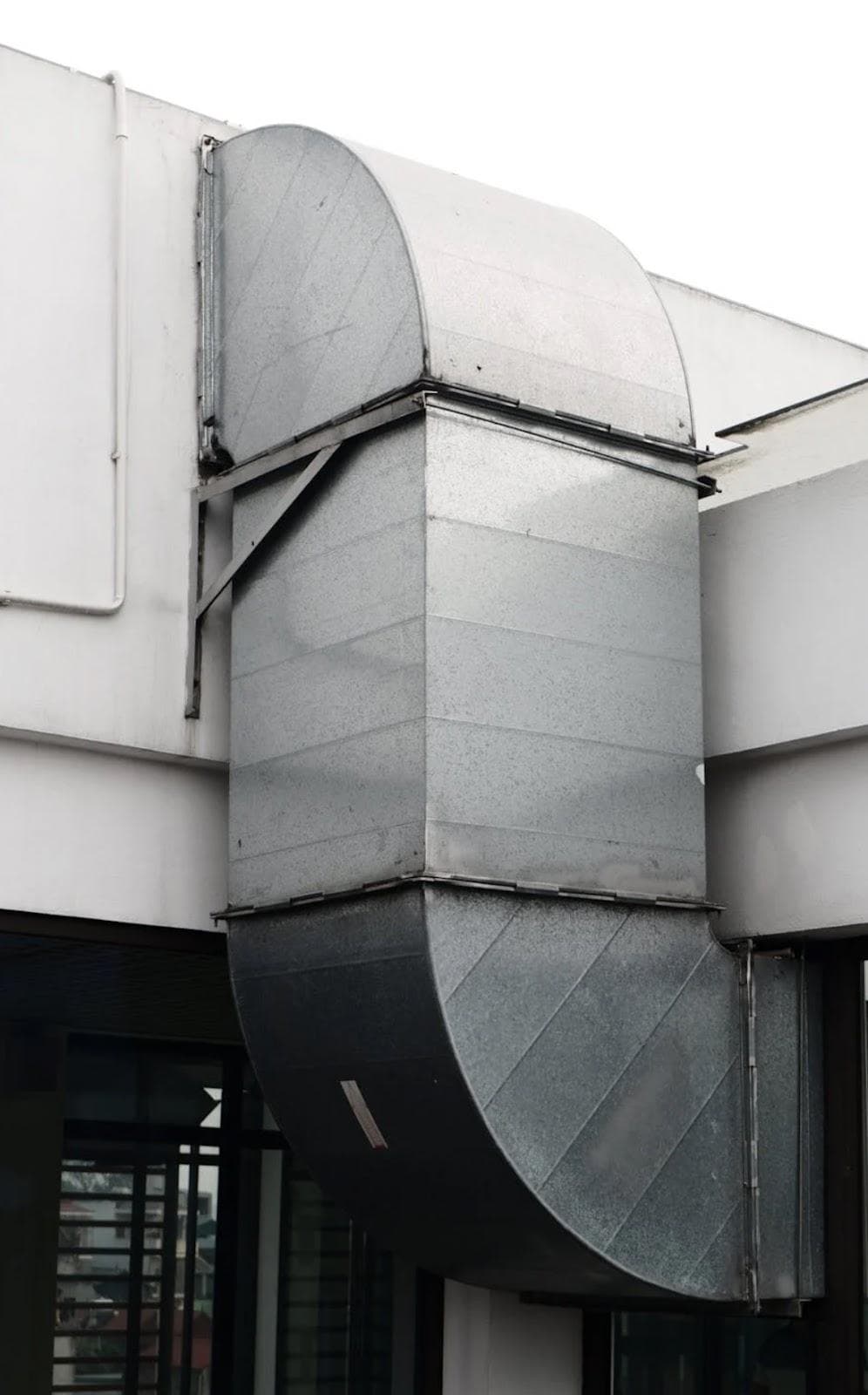In the short term, handy air conditioning units are a suitable option for supplementing existing air conditioning systems within your home or workspace. They make it possible for you to move the unit to where you feel that it is needed, more especially during the hot seasons. Nonetheless, its installation has to be done correctly to serve its purpose efficiently.
Knowing how your portable air conditioning unit operates and how to set it up is important. It can go a long way in improving its efficiency thus saving on energy costs and controlling your building’s temperature. And if you don’t know…a part of this set is venting the system. However, some spaces may not accommodate handy air conditioners because they are commonly ventilated through a window. Here is an important-to-know paper about how to vent a portable air conditioner without windows. Also, you will find why it is important to vent AC at all. So let’s start!

Best portable cooling devices
Why Do You Exactly Need To Vent Your Portable AC?
For instance, when we consider and analyze how an air conditioner works inside our premises. So take in hot indoor air and cool it down with internal refrigerant, while blowing out cold-conditioned air back into our rooms just like any other portable unit.
However, these units will not cool all the air that they draw in hence there is a need for a venting system. This additional air is still hot so it should not be expelled back into the room you are trying to cool, but instead outside. For this, a vent hose is included with portable air conditioners that take out warm air from any given space.
Venting a Portable AC without a Window
Every single portable window air conditioner must have a vent for it to work correctly. When turned on, the AC pulls in warm room air. After cooling down this air, it releases it back into your room again. Meanwhile, the conditioner will have to discharge heat.
An unvented one will make an AC pump hot hair back inside rather than cool effectively making its use redundant. This can result in huge expenditure on cooling costs.

Factors To Be Considered Before Making a Choice
You must think about the essential steps for venting an AC before deciding which of these options you prefer. Firstly, you must get your hose from the air conditioner outside. Unit hose that is too short to reach outside is one of such problems, which are common among users. If you have this problem select either another place for your unit or buy a longer one fitting into your machine as well. Lengthening the hose of your unit isn’t always possible and it can cause damage to portable ACs. If considering increasing the length of the hose, mind creating back pressure. It is advisable that when increasing its length, you also increase the diameter of your hose to avoid this problem. Nevertheless, remember that overextending a hose can also harm your equipment. Moreover, consider that increased distance will slow down the movement of air through a longer pipe.
The other thing you have to be conscious of is that the hose should be as straight as you can make it because bends trap heat, reducing air conditioning efficiency. Many hoses are shortened to eliminate the need for bending them to fit the place desired. Many AC units come with a kit that allows for an exhaust through which hot air is expelled. This is vital since it makes up a closed environment under which the AC can manage to operate at its optimal capacity. The negative pressure created by taking in hot air supports entry of unconditioned air hence cooling off the room being conditioned seals prevent this from happening. Just hanging out your hose outside will mean that your AC isn’t going to cool down your room well enough.
It should be remembered that these units often have considerable weight and size, making it difficult to move them across your area. Always think about more lasting choices when thinking about your choice of air conditioner. First, let’s see some ways in which you can keep your room that has no windows cool.
Using the Door
Another method of AC venting is through the sliding door. There are kits that are meant for sliding doors only thus assisting you in releasing warm air. Simply mount them onto your door and enjoy a cool house.
Unfortunately, the hose pipes for most portable ACs are short. Thus, you will have to place it near your door at all times. In case it is far from the door, then the hose pipe might not expel warm air outside. Good thing though, that some handy ACs have longer hose pipes.
If you feel like maybe placing a pet’s door in your room isn’t right for a handy AC next to it; then use the AC unit as an outlet instead. But ensure you have sealed adequately around where the hose enters through. This helps avoid letting hot air back into your room again.
Through the Wall
If you don’t have a door when leaving the house, venting through a wall is best for you. The main challenge to be overcome in wall venting is making an opening that fits your hose and allows hot air to leave the room. This works well with ACs having single hoses. However, if it has several, there may be some hesitations about making extra openings that are needed to mount them.
While using this method of ventilation for your unit, be cautious enough while selecting the wall to drill into. You should choose a thin wall since it will be easier to cut through. While anything that has been reinforced would mean calling in an expert. So this is not likely the best approach. Take in mind that making a mistake could be costly.
Finally, it’s advisable that one installs a vent and seals it off from home. These can be found at hardware stores and include covers that can close when you’re not using your AC as well as prevent items from entering the vent thereby hampering airflow.
Through Old Unused Chimney
Another portable AC venting method that can be used in a windowless room is through a chimney. You can remove the hot air from your cooling system by venting it out through the chimney. However, it should not be in use. Never attempt to channel the warm air from a portable AC via a working chimney or fireplace for safety purposes. Various dangers could come up if you try to do this.

If however, you don’t use the fireplace, then place it directly beneath the chimney flue on top of which you may put your AC unit inside. Then put the hose in the chimneys’ wall that would blow hot air up these vents; also you could extend this pipe further upwards to make heat removal more effective.
Through the Ceiling
In case there is a drop ceiling at home, venting can also take place through this ceiling as well. In most modern houses, drop ceilings are absent but they are common in old ones. For instance, to allow for hose insertion, a hole has to be made in your ceiling panel. Make sure you do not tamper with pipes and electrical cables found above your room's roof panel.
After you have made the hole, pass the hose through it and use silicone sealant to plug other openings. You have to check the level of humidity in the ceiling space as well as room temperature so that they are not too high. In case of excessive humidity, there can be mold growth in this open roof space. However, mounting an exhaust hose on a ceiling tile is highly technical. For homeowners without such understanding, it may pose challenges. This is why most people opt for easily installed ceiling vent kits. It is certainly the easiest way to fit a vent pipe into a hole in the ceiling.
It should be noted that computer server rooms usually ventilate their AC systems through ceilings. These areas generally do not have any windows and therefore, this method of ventilation appears as the only option.
Through the Dryer Vent
You could decide to vent your portable air conditioner through a dryer vent. Most manufacturers and experts will advise against it because these ducts tend to be smaller compared to the size of exhaust hose for AC units. There is much effort needed when inserting this tube inside dryer vents.
However, many people have tried it and it works. If you have a clothes dryer in your house then you need to try this especially when there is no other option available. You should only check that the ventilation hole of the dryer is big enough to allow out hot air.

Always make certain that the vent of the dry can get rid of hot air before you link the AC hose with it. Otherwise, heat may accumulate within the system leading to a fire outbreak. Afterward, it will be necessary for you to ensure that both appliances (air conditioners and driers) are running efficiently, even if you have vented AC through the dryer vent.
To Wrap Up
Now that you know how to vent your handy AC without a window, you have nothing to worry about in your windowless room. You can do it through the all mentioned methods, so be free to choose one the most appropriate for your situation!
FAQs
- Why is it important to venting AC?
If the handy AC unit is not properly ventilated, it will simply fail to expel hot air from your building. And you will have a hot as well as a stuffy room. Truly speaking, you won’t realize the benefits of your handy AC unless the air can travel from indoors to outdoors.
2. Is it that all handy ACs need to Get Vented?
Firstly, it will be true to say yes. Like other cooling systems, a handy air conditioner operates by drawing in hot air from a room and sending it to its refrigerant for cooling purposes and then blowing cold air back into the room while at the same time ejecting hot air outside.
All handy air conditioners require an outlet to exhaust heated air. If you leave your tube inside the room, you will have cool and warm air coming out of the machine. Consequently, it can interfere with the efficiency of your handy AC. You might also use a lot of energy to cool that particular place.



